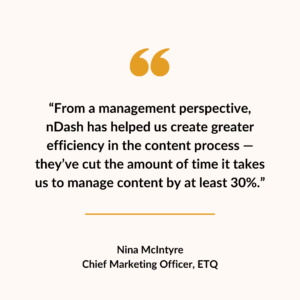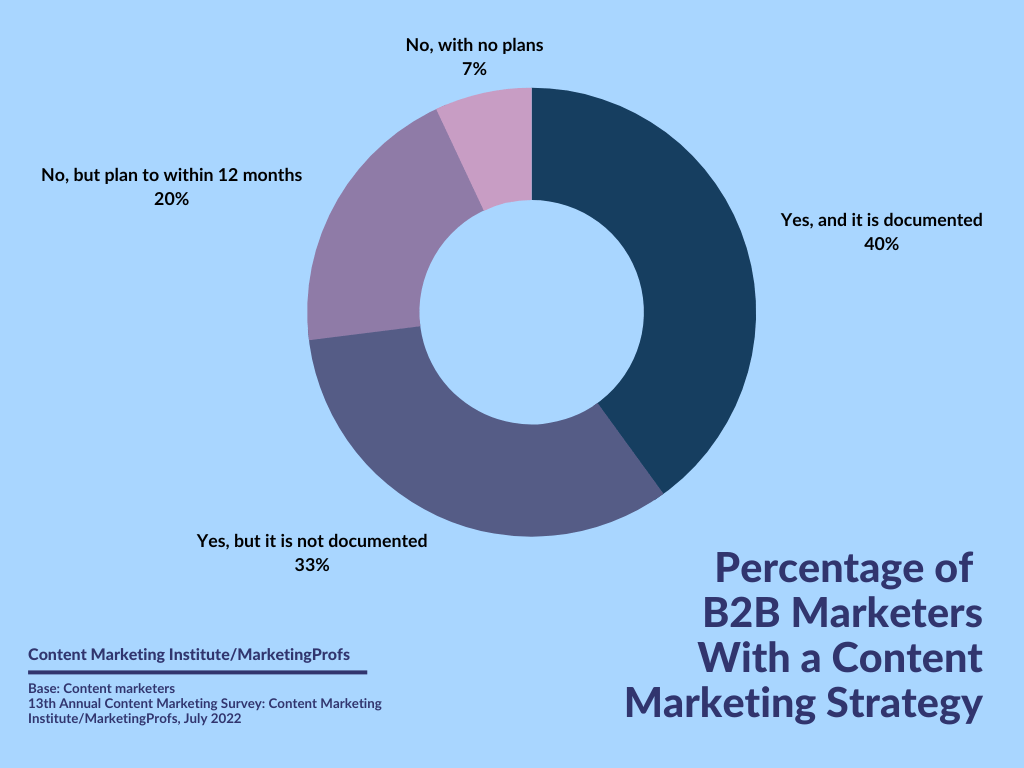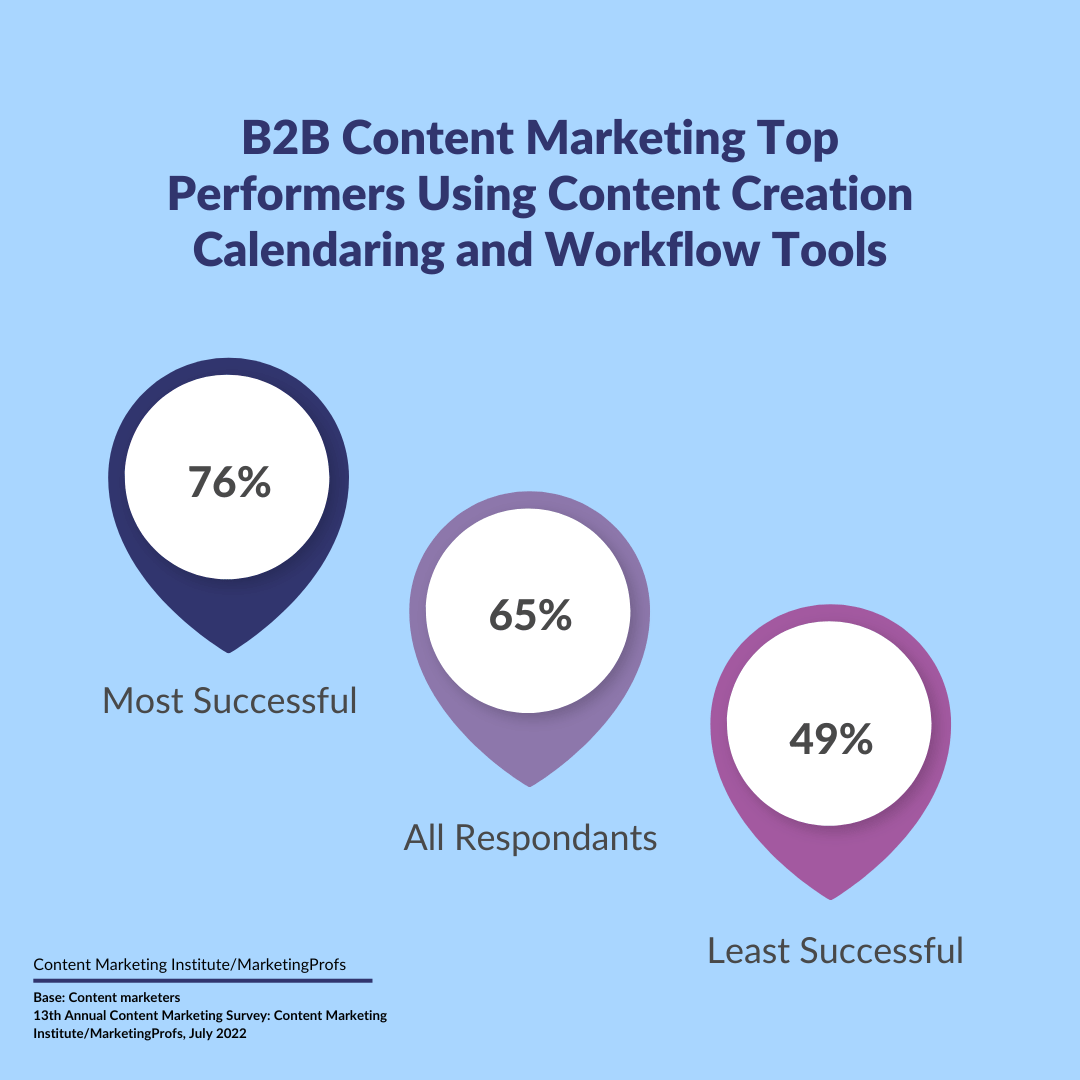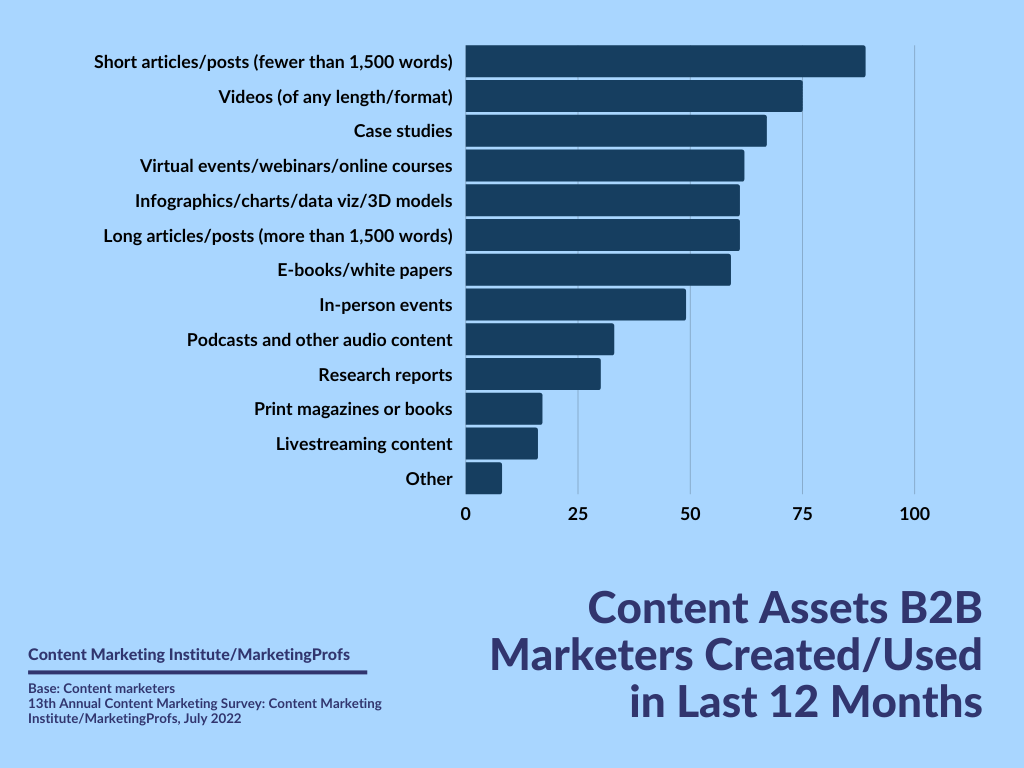How large organizations can streamline production and billing while scaling content volume.
Step Up Your Team’s Content Management
A content manager’s responsibilities include working closely with content marketers, freelancers, subject matter experts, and leadership teams. The goal is to implement and improve content strategies and plan editorial calendars. That goes beyond simply brainstorming blog topics and assigning them to freelancers.
For example, content management also includes determining what content they can create from existing assets. So, if they have a webinar recording, they could use it as a source to create a:
- Blog post wrapping up and detailing the event
- Blog post focusing on the theme or topic of the event
- Video snippets featuring snippets from the webinar to use in social media or content embeds
- Downloadable checklist, template, or other assets
None of this can happen unless marketers have access to freelance writers.
Pain Point: Sourcing Freelancers and Managing Content
 Aaron Lester, GoTo’s content strategist, turned to nDash to solve that pain point. “Our team of four content marketers uses nDash to source freelance writers for all kinds of content — from weekly blog posts to longer-form content like eBooks,” Aaron explained.
Aaron Lester, GoTo’s content strategist, turned to nDash to solve that pain point. “Our team of four content marketers uses nDash to source freelance writers for all kinds of content — from weekly blog posts to longer-form content like eBooks,” Aaron explained.
“nDash has also been helping us develop webinars. These were consistently challenging because they heavily taxed our internal resources — we may have two to three subject matter experts and a similar number of marketers working on their creation. Now, nDash handles everything from editorial to design. It’s been a huge win, and having nDash on our team has helped us streamline the webinar process,” he continued.
Tammy Sproule, ETQ’s former Director of Content, also shared how using a content creation platform helped step up their team’s content management.
“We’re a lean marketing team with few resources dedicated to producing content,” she explained. “But our company relies heavily on content for top-of-the-funnel demand generation, social media, and thought leadership. We realized that if we wanted to be able to meet our ever-growing content needs, we needed to enlist help.”
See Quantitative Results
Nina McIntyre, ETQ’s CMO, said, “Since nDash has been on board, we’ve reduced the time it takes to review content on many of our assets by at least 50% because the content comes out right the first time.”
“From a management perspective, nDash has helped us create greater efficiency in the content process — they’ve cut the amount of time it takes us to manage content by at least 30%,” she continued.
Streamline the Freelance Writer Onboarding Processes

Another pain point large organizations face is finding and vetting freelance writers. Finding and vetting freelancers involves asking colleagues for referrals, visiting competing sites to find niche writers, and considering using an agency or content creation platform.
Steps For Streamlining Onboarding Freelancers
- Find and vet freelance writers: Put out a call for writers, read their clips, look at their references, and verify their niche experience.
- Gather paperwork: Content brief templates, non-disclosure agreements, style guides, and tax reporting forms.
- Set up a payment process and terms: Identify a payment method (like Gusto, Payoneer, PayPal, or Stripe). Determine payment terms (like upon completion, weekly, or bi-weekly).
- Schedule a kickoff call: Use this time to provide company background, create a communication schedule, share tools, and share relevant training documents.
Pain Point: Simplify the Onboarding Process
In our interview with Aaron, he explained why turning to a content creation platform helped solve the onboarding pain point. “Another super valuable way that we use the nDash platform is to bring all of our writers — including those trusted writers we have previous relationships with — into the nDash ecosystem,” Aaron explained.
“We ask them to hop on board with nDash and then send them a one-sheet doc that nDash created that walks them through how to make it happen. Our existing freelancers are easily able to onboard to nDash without any need for hand-holding on our part,” he continued.
 Choosing to work with a content creation platform means brands don’t have to worry about reading a freelancer’s clips, studying their portfolio, or looking at their social media profiles. It also means brands don’t have to worry about asking questions about the writer’s background, how they approach new assignments, or if they have industry experience.
Choosing to work with a content creation platform means brands don’t have to worry about reading a freelancer’s clips, studying their portfolio, or looking at their social media profiles. It also means brands don’t have to worry about asking questions about the writer’s background, how they approach new assignments, or if they have industry experience.
“We knew we didn’t want to hire a passel of individual freelancers — we wanted someone who could coordinate the work, who would allow us to talk with one person, and then they’d manage the writer team. nDash made it easy for us to meet our content needs in a streamlined way,” Tammy said.
Tips for Increasing Content Volume
Streamlining the onboarding process and content production goes hand-in-hand. Once you have the freelancers you need, it’s easier to scale how much content your brand produces without experiencing bottlenecks. For example, Aaron’s team uses nDash to keep that train on the tracks.
“Now, scaling is like turning on a spigot — the spigot is there. It’s just a matter of us turning it on and adjusting the flow to meet our needs. We can look forward to GoTo’s growth, confident that our content production won’t slow us down.”
Create a Content Strategy

Increasing content volume starts with creating a content strategy. These strategies are “living documents” that continue evolving as content needs change. However, this is a complex process requiring expertise in:
- Defining goals, messaging, and tone of voice
- Identifying and researching personas
- Running content audits to find gaps and determine the best types of content to create
- Determining the best content management tools
Because a marketer or brand’s time is already spread thin, creating a content strategy is another pain point. Tammy explained how using a content creation platform solved that.
“nDash serves as a true partner in our content strategy, helping us create a strategic content plan. nDash worked with us to lay out a roadmap for our content needs, showing how each piece fits together and where it works into our larger marketing plan and content journey.”
Develop – and USE – an Editorial Calendar

While some believe an editorial calendar IS their content strategy, that isn’t the case. It serves as PART of a brand’s overall strategy – the tool necessary for managing content. It shows:
- Key dates: Start dates, deadlines, delivery dates, and target publication dates
- Content titles: The deliverable’s title, optimized for SEO
- Content type: As identified in the content strategy (like a blog post, case study, product update, and downloadable)
- Documentation: Links to content briefs, outlines, and other supporting materials
- Target audience: As identified in the content strategy
- Keywords: Primary and secondary keywords
- Production notes: Content-specific notes from freelance writers or other team members
These details are great – BUT – you have to use them. Setting up an editorial calendar is the first step. Like the content strategy, it’s a living document that updates frequently. When brands make using an editorial calendar part of their routines, they’ll have a high-level view of what’s next and opportunities for increasing content volume.
Increase Content Volume by Repurposing Existing Content

Reusing and repurposing content plays an integral role in your content strategy. Here’s also where your editorial calendar is an excellent tool. Finding content that’s worth spending time on repurposing involves:
- Looking at evergreen content
- Reviewing which blog posts are best performers
- Identifying existing posts that can go from “good” to “great”
Remember, repurposing content is more than finding something in your archives to reuse over and over. Instead, it involves elevating those pieces of content, giving them fresh insights, unique perspectives, and updated data.
Here are some suggestions for repurposing content:
- Repurpose a 12-point listicle into 12 individual blog posts
- Create slideshows or carousels using quotes, data, and other statistics in existing case studies and reports
- Turn a how-to guide into an infographic featuring high-level process steps
- Look for posts containing outdated dates or other statistics to create something current
- Turn a series of blog posts or articles into an ebook
Find a Content Creation Platform That’s Obsessed With Customers
Turning to a content creation platform that’s obsessed with customers means they’ll work as a partner toward ensuring brands meet their goals.
“It feels like personalized concierge service. nDash is a true customer-first company. I spoke with them about something we thought would be helpful to have. That was the ability to add attachments to assignments in progress — and they listened, responding almost immediately. Their real-time responsiveness to our needs has gone a long way toward developing a deep, long-lasting (and loyal) customer relationship,” concluded Aaron.
See how nDash can help your brand increase content volume and streamline production. Contact our sales team today and book a demo.
FAQs About Increasing Content Volume and Streamlining Production
What are the steps in creating a content strategy?
- Identify your content creation goals
- Define and develop personas (a deep dive into your target audience)
- Conduct a content audit (there are lots of opportunities to find content gaps, identify content to repurpose, and discover where to improve content)
- Select your content creation tools (identify the best ways to manage content and pick tools that align)
- Look at your content creation goals and identify the best types of content to create
- Create an editorial calendar and brainstorm ideas
- Set up a publishing calendar and use your editorial calendar to manage it
What are the steps of content development?
- Set goals for each piece of content: Be sure they align with your content strategy
- Identify and research which persona aligns with the piece
- Identify themes for each piece and align them with your content strategy
- Map where it’ll fall in the funnel (Top of Funnel, Middle of Funnel, or Bottom of Funnel)
- Create a content brief that contains keywords, an outline, and supporting material
How does an editorial calendar streamline content production?
- Plot topics, themes, audience segments, content briefs, keywords, content type, and other data
- Break themes down into groups to ensure you’re hitting the right targets
- See which pieces of content are in progress or ready to publish at a glance
- Create timelines to ensure seasonal content and other high-priority pieces publish on time
- Use your editorial calendar to create a repository of content to look back on for repurposing opportunities

